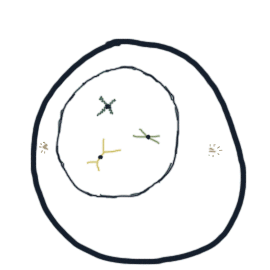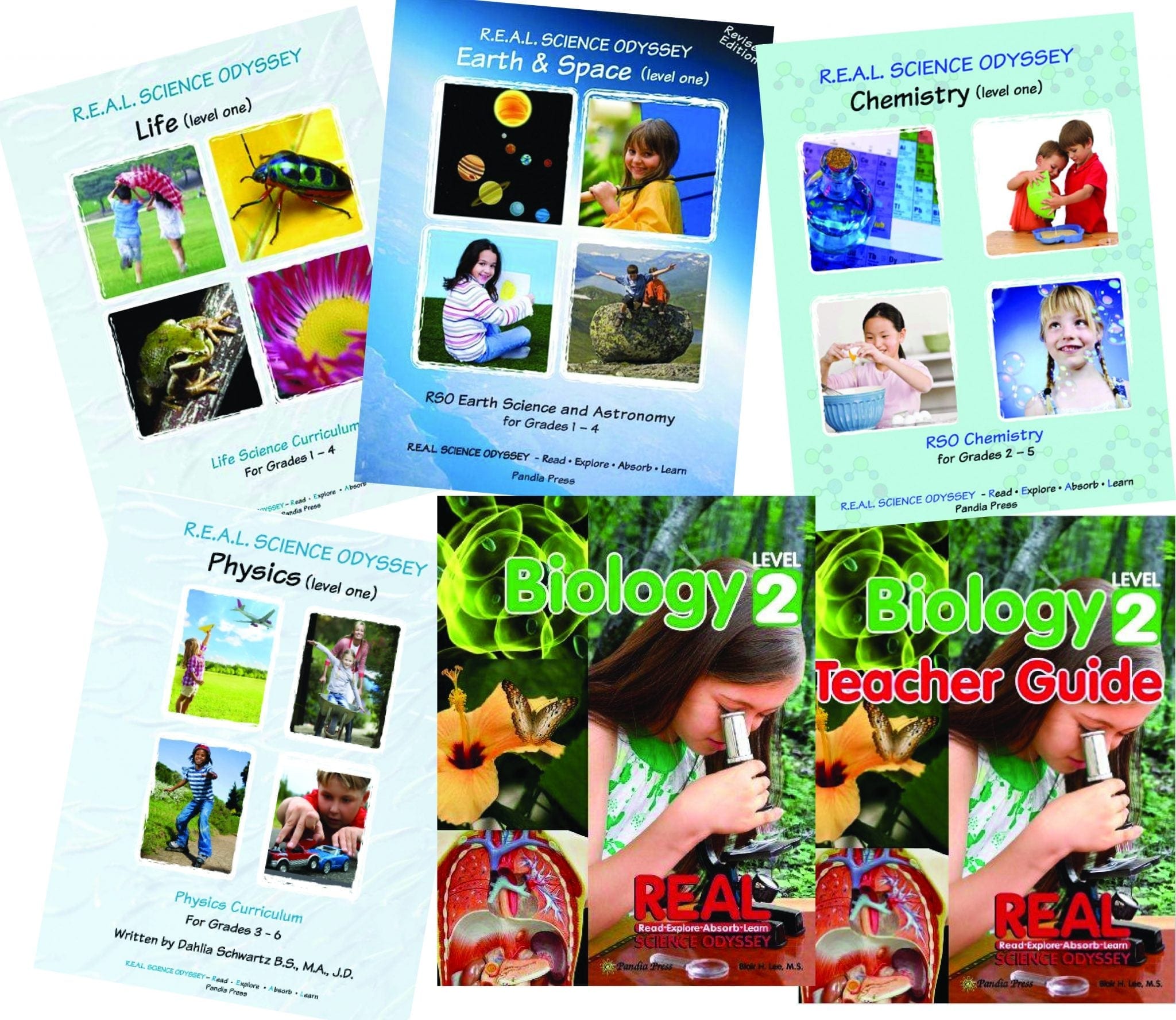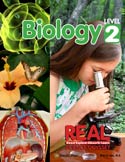Using RSO Biology 2 for High School Biology

There is a planned level 3 book that will use the Level 2 book with added material in each chapter and in each unit. In the mean time, I am getting many requests for how Biology 2 could be brought up to the high school level. Some parts of it, like the microscope section, are already at a Level 2 and 3. This is not as complete as the level 3 book will be, but like these suggestions, the level 3 book will use Bio 2 and add to it.
Before I get into the specifics of how to do this, I would tell you to relax about this. About six months before Sean started ninth grade, I looked over the California A – G requirements. These are the specific course requirements students need in order to be considered for application to one of the University of California, UC, schools. This university system is considered by many to be one of the top university systems in the United States. Within each of these requirements you can look at the content UC expect you to cover. I was flabbergasted. Many of the science requirements and labs were blindingly easy and in many cases not central to an understanding of the subject. The reason I was so flabbergasted was that if a student did nothing more than meet those, it would be very unlikely they would be successful in science classes taken at UC schools. I taught at UCSD while I was in graduate school there. Even the introductory level science courses at UCSD are challenging if you haven’t had good science in high school. These standards, to me, are an extension of the button-checking, testing culture that pervades schools from grades 1 through 12. They are too often a collection of hoops that if a student jumps through will give them a ticket so they can apply to certain universities. This is done without a focused effort on kids having the necessary skills and tools to understand how learning happens in general, and specifically as it applies to science, how the natural and physical world works. These hoops also often do not focus on the skills necessary to succeed in their college classes. (Blair gets off soapbox now and gets on with the task at hand.)
Let’s start with what the necessary skills are for a high school student studying biology.
1. understanding how to apply the scientific method – this includes having the ability to practice science by applying the scientific method to a given science issue. 2 articles I wrote about the scientific method:
2. being able to write a lab report – Lab reports are a very formulaic type of writing. Understanding how to write a lab report is a great way to introduce the formulaic nature of some types of writing. In college, when students take lab classes they are expected to know how to write a lab report. I never took or taught a college lab class where this skill was taught, but in most cases all or the majority of your grade in lab classes comes from these reports.
3. the ability to read, understand, and discuss current science topics at a high school level
4. having a basic understanding of the foundational fundamentals that underpin biology – that is not to say there are not some important side issues that are critical to learn – it just makes more sense to include those into a discussion focused on a conceptual understanding of the basics of biology
5. being able to apply math to the science of biology
The Specifics of what you should do with the course
· Lab reports mandatory
· Use Show What You Know problem sets as quizzes, and have students take tests that you grade
· Document experiments – you can use photos for this and lab reports; I think it’s a good idea to make students accountable for this documentation. Good documentation is a part of good science. By being responsible for documenting their work, students, in a practical way, come to understand that.
· Practice science: This has a specific meaning in science education. It refers to people being able to use what they know to design an experiment where they “practice” science that follows the scientific method. I have included links to articles I’ve written to use as projects where students can practice the science they are learning. The most up-to-date version of the science fair article is in the current issue, 4/16, of the magazine home | school | life.
· where’s the starch: https://blairleeblog.wordpress.com/2015/03/07/practicing-science-wheres-the-starch/
· science fair: you can do this even if it’s just you and your child. Choose 1 question and have him or her design an experiment based on that question: https://blairleeblog.wordpress.com/2014/08/27/a-science-fair-in-your-science-co-op-class/
· Electron transport chain during photosynthesis – I have included a link to a search page for a YouTube video on this topic. You or your students should find one of these he or she likes and understands. You should expect students either in writing, as an additional question to a test, or through discussion to explain this concept. It is important for high school students to understand that the electron transport chain, at its most basic, is the method cells use to generate energy. It is through something as simple as a cascading release of electrons going from molecule to molecule that organisms get the energy to do everything associated with life. Https://www.google.com/webhp?sourceid=chrome-instant&ion=1&espv=2&ie=UTF-8#q=youtube+video+photosynthesis+and+the+electron+transport+chain
· For each unit choose a focus in addition to the material kids are covering. Make it something meaningful for them and relevant from the standpoint of current science. This is something that kids will do on their own. You can choose what they read. (I recommend at least giving them one starting article). You need to read the article too, or at least be familiar with the topic, and then discuss it. I am giving suggestions below. If your child has a different interest, they should learn about that topic.
- Unit 1: study viruses – AIDS virus, Zika virus, Ebola virus – all of these are great choices. If you have multiple students, consider letting each student choose a virus they read about, and then discuss. I like to tell Sean teach me about it. You learn so much more when you are trying to educate someone on a topic.
- Unit 2: choose something related to cells and chemistry – I have included a possible extracurricular study for this looking at lead toxicity. https://www.facebook.com/notes/9672…
- Unit 3: if you can afford it, have your child send his or her DNA to be analyzed. Use the analysis to study this topic. If you can’t, then a good choice would be to learn more about Neanderthals and the current understanding about the differences in their chromosomes compared to modern humans. Or you could study this very interesting topic, and have kids watch lesson 1: part 1 through part 5, https://www.youtube.com/playlist?li…
- Unit 4: during this, the longest unit of the book, kids will work on the practice of science by designing two of their own experiments. I would spend the time focusing on designing experiments and how to apply the specifics of the scientific method to their experiments. This is a good lead-in because in Unit 5 kids are first introduced to the formal definition of the scientific theory. Without a clear understanding of how science is practiced and the specific parts that go into the practice of science, the specific application of the word theory in science is often confused with its common use outside of science. A very interesting, to me, LOL but hard, activity that I wrote can be found at the link below. If you have a math loving child they might love this. It’s a great demonstration too. PM me if you need someone to walk you through it. https://blairleeblog.wordpress.com/2015/02/22/why-are-we-all-so-different-an-unpublished-lab-from-r-e-a-l-science-odyssey-biology-2/
- Unit 5: Your Inner Fish from HHMI – watch it and discuss it. If your child is into videography, a great project would be to have them make their own video about evolution. http://www.hhmi.org/biointeractive/your-inner-fish-series
- Unit 6: have students choose an environmental topic or environmentalist and learn about that, him, or her. It can be one of the environmentalists from the famous science series in this Unit. They are all really cool people.
- Unit 7: Because so many high schools don’t even teach this, it would be easy to argue that this already is at a high school level. The main difference between the high school level courses I have seen, those that do teach this, in the way this is taught is that the cladogram’s use biochemical and genetic markers instead of the more apparent physiological markers I chose. If you have a student who is very strong in science, I recommend looking up cladograms that use those, otherwise I would stick with the cladograms as they are written. The unfamiliar chemical terminology can make the cladograms seem harder than they are, and many kids find them challenging as written.
- There is a research report that students work on in Unit 7. This paper is based on one I wrote in the first evolutionary biology class I took when I was in college. High school students should be expected to write this report with more emphasis on the evolutionary history of the organism.
A great article for those of you using RSO Bio 2 in a co-op is listed below. It was lots of suggested resources: https://blairleeblog.wordpress.com/2014/07/30/how-two-homeschooling-moms-used-real-science-odyssey-biology-2-in-their-co-op/
This post contains an affiliate link.
Check out our review of Be Naturally Curious here.


